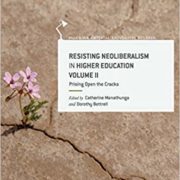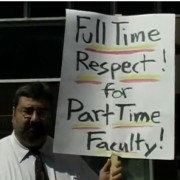Decades ago, CBS and New York University teamed up to bring academic subjects to everyday people, every morning, for 25 years. The program was called ‘Sunrise Semester.’
Amid the COVID-19 pandemic, America struggles to arrive at a viable plan about how to educate students–from Pre-K through higher education. The most thought of project works when students have reliable access to the Internet. The problem is that poor/non-existent internet connections are a fact of life for many students enrolled in public education.
While the search is on for viable alternatives, there may be no need to “reinvent the wheel.” Instead, history and convenience may have the answer. It’s an approach that was available to Americans from the late 1950s-early 1980s, and it was available through a technology situated in living rooms across the land … television.
Called Sunrise Semester, the effort was a collaboration between CBS and NYU. Launched in 1957, NYU professors taught each morning at 6:30 a.m. Dr. Floyd Zulli, Jr. taught the first course, Comparative Literature: from Stendhal to Hemingway. In Sunrise Semester, two courses were offered on alternating days–M-W-F and T-T-S.
Courses in philosophy, math, science, and more were offered, and the program continued until 1982. According to NYU’s website, in its first year, 177 students paid $25 per credit hour to take the first televised course, and over 120,000 people watched the lectures for no credit.
The lovely thing about Sunrise Semester is that CBS and NYU brought education into the homes of everyday people. Essayist Phillip Lopate writes how his parents, who were “textile clerks with no more than high school diplomas,” set their morning alarm to hear Dr. Zulli’s course.” They lived on Stendhal in Brooklyn ghetto, and “they watched not for credit, but for old-fashioned enlightenment.”
At its zenith, NYU estimates that the series was seen by nearly two million viewers. It paid off with academic degrees, too. For example, in 1962, Cora Gay Carr–a well-known Broadway actress–graduated from NYU by earning 54 of 128 credits through Sunrise Semester.
Sunrise Semester was widely accessible because it was available over public airwaves using a widely held technology. Today, TV is an American staple.
According to AdWeek, over 96% of U.S. households have a TV.
While there’s always the urge to rely on the most advanced technology available, there’s obviously something to be said about turning to older technology that has been adopted by just about everybody.
But there’s more to the story. Sunrise Semester was made available through a commercial outlet (CBS), and that’s likely to be an unviable alternative in today’s highly competitive/market-oriented environment. That’s where PBS could step in.
Surely, American ingenuity should be able to find a way to resurrect Sunrise Semester. It’s not the complete answer, for sure, but it could play a role in today’s uncertain times. Besides, why concentrate on a partly-adopted technology (the desktop/laptop computer) when something sitting in the living room awaits?
_________
Frank A. Fear contributed to this article.




